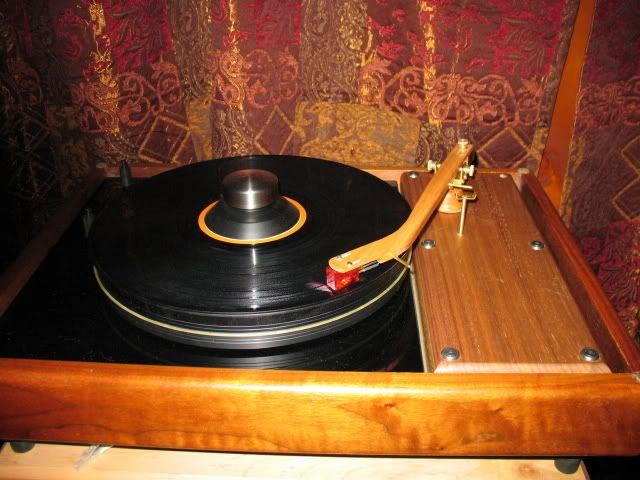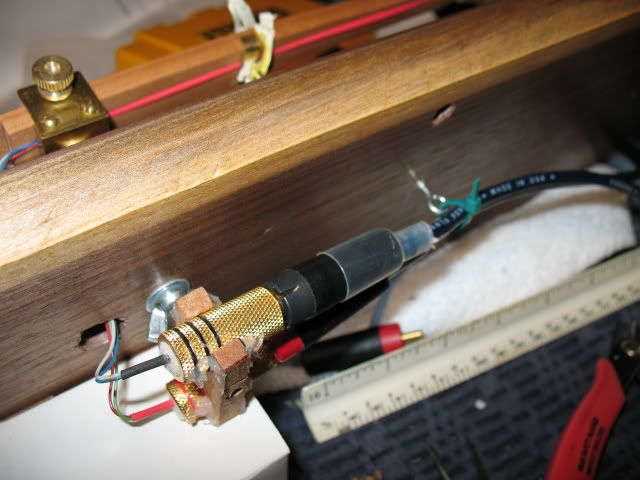Removed the Ace and installed the Sonata last night, got the wire dress on the Cherry tonearm really right (it takes a bit of patience, trial and error to keep the wires from exerting too much anti-skate) and spunned a few albums.How does the Sonata beautify voice, which maybe implies some treble roll-off but increase the level of detail heard? Amazing cartridge.
After checking correct cart set-up with Alison Krauss New Favorite, i.e., no glass was broken, the voices are where they belong and the Dobro doesn't cover the whole stage,I moved on to the Chesky re-issue of the RCA shaded dog Lt. Kije.

Produced and engineered by the incomparable team of Richard Mohr and Lewis Layton it's one of the most sought after recordings in the Living Stereo catalogue. This re-issue, done from the original tapes at the BMG facility, but with Chesky's own Ampex 300 and pre-amp, is, in my opinion, better in some ways than the original and far ahead of the Classic re-issue.
With my system in it's current configuration: 4Pis, Classe Model 70, PEC passive, Nova Phenomena phono stage, VPI HW-19 MK IV and The Cherry Tonearm with Grado Master Sonata, I realised a sound that makes you forget about all but the music; no room, no equipment and no memory of all the tantrums that ensued from the maddening process of building and tweaking a stereo system.
Besides the new 4Pi Pro speakers, the single biggest change was the substitution of the Cherry tonearm for the SME III. Shown here with the Ace

it has qualities that the far more sophisticated SME just can't equal. Whether the large diffeence in mass, the introduction of walnut rather than acrylic for the armboard, or the effectiveness of the astoundingly simple and primitive bearing system, the Cherry gives a better sense of space, of voices attached to living bodies and the illusion of music being performed as opposed to reproduced.
There are some sonic quirks, however, There is a hint of warble at times as well as a slight increase in surface noise. This is true with either cartridge and not just the infamous "Grado Dance". The "warble", I suspect, is responsible for some of the "life" singers especially exhibit just as reverb does for instruments. There is a parallel in it's sound to that of the differences between tubed and solid state electronics; the Cherry is tubes, the SME, solid state.
I had a difficult time removing the wires inclination to return the arm to rest as well as deal with the fact that it sounded better to me not quite tight to the armboard. The bit of looseness caused the interconnects yoke to spin and upset the wire dress. I resolved that with an eyebolt and a wire tie

The 9" Cherry Tonearm from Len at Tonearmaudio.com with it's $190 price tag makes one wonder just how much better-sounding a $5000 arm could be. Perhaps all the engineering sophistication of the high-priced arms is necessary to overcome the fact that light arms just don't control the vibrations of the stylus than heavy ones. This could be another instance of the old ways being best just as horns are superior to domes. Or perhaps with my ears in their twilight, I just can't hear or care about anything but the music.







